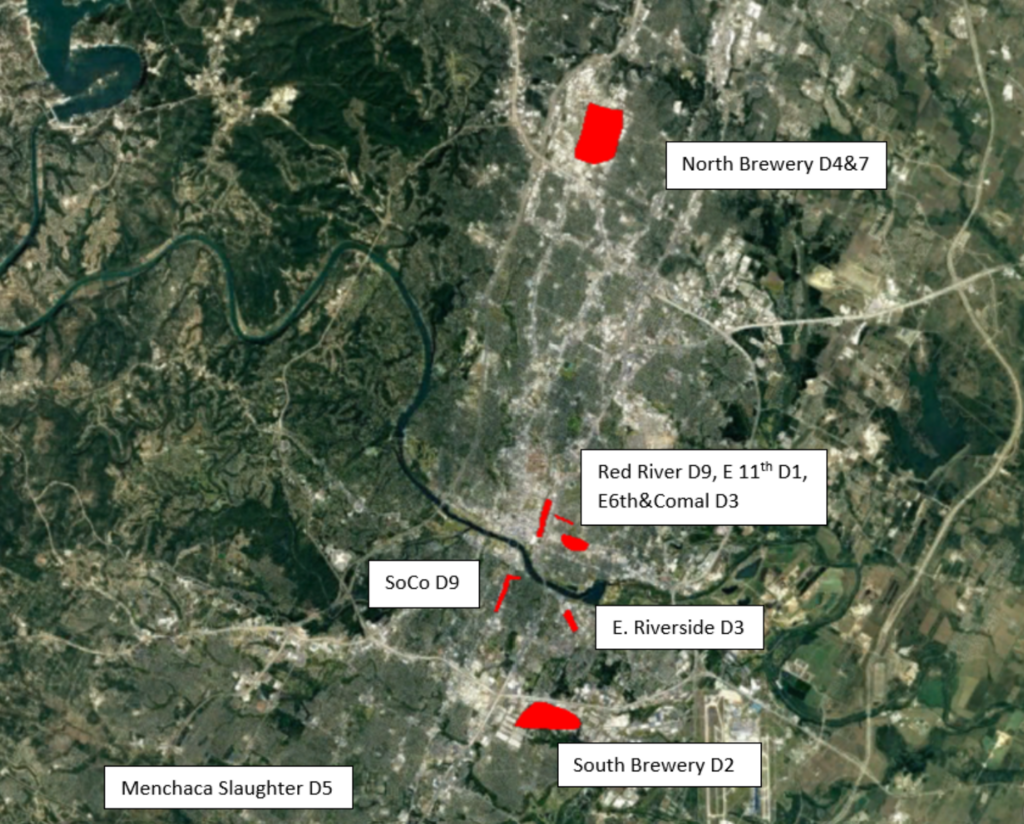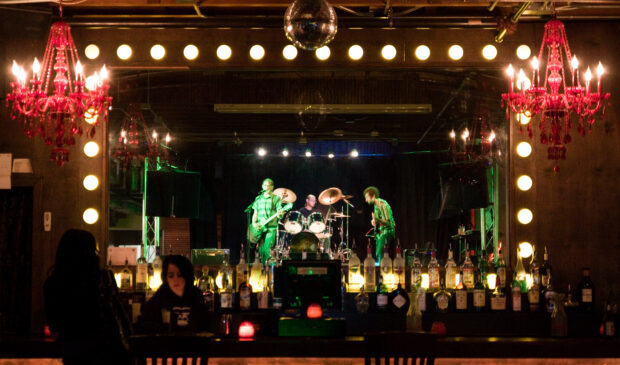New cultural districts could thrive with EDD’s planned framework
Tuesday, January 23, 2024 by
Chad Swiatecki A pair of long-gestating city initiatives have entertainment and arts proponents eyeing the many new areas around the city that could become cultural districts in the next handful of years. Once enacted, the combination of economic incentives, infrastructure support and planning considerations could make it easier for cultural uses to cluster even as property values continue to grow throughout Austin.
What’s at play is the implementation of a change in land use policy that makes it easier to open music venues and creative spaces in all parts of the city, to the level of a sevenfold increase in the number of lots that could now hold a commercial live music space.
Meanwhile, staff in the Economic Development Department expect to present a framework to City Council this summer that could spell out the economic and cultural components of other districts around the city based on a high concentration of music and arts uses or other businesses that bring a distinct flavor to a small geographic area. That framework would make it far easier for community members to petition the city to create a cultural district and would likely lead to a rapid increase from the four such districts already established.
Those districts are the African American Cultural Heritage District, the Fifth Street Mexican American Heritage Corridor, the Red River Cultural District and the South Shore Cultural District.
Matthew Schmidt, a program manager with EDD, said the city’s lack of a standardized process for creating cultural districts can make it a challenge for community and business leaders who want to protect and enhance distinct areas throughout the city.
“We’re kind of creating a working definition around that, which is microgeographic areas that contribute to the unique characteristics of Austin or contribute economic opportunity to create complete communities around the city of Austin,” he said, adding that the finished framework will let city staff and Council more easily evaluate potential districts.
Beyond any incentives Council may eventually enact for creative or cultural spaces – akin to density bonuses awarded for affordable housing and other community benefits – Schmidt said the city likely will create cultural district overlays or similar considerations for designated areas to encourage or require a baseline amount of cultural space in new development projects.
“This finally gives us an organized toolbox to resource and connect our districts so they can potentially tap into city programs or projects that would amplify their messaging. We do hope that eventually this could potentially spur more investment. … Of course, that comes down to budget decisions.”
The framework will likely borrow many of the principles and tools that were part of the Souly Austin program that was created to promote the creation of small business districts around the city.
Nicole Klepadlo, who helped launch that program and is currently head of the Red River Cultural District, said the city has long needed a structure for cultural districts that will make it easier for community leaders to get a commitment from city hall on the financial, programmatic and regulatory tools needed to help districts grow and thrive.
“This framework that we wanted when we first started, when I worked at the city through Souly Austin, was to garner the political commitment – and that is the word I want to stress – the political commitment to nurturing destinations that bring economic, cultural, community, neighborhood value to Austin,” she said, adding that common enhancements for cultural districts would include sidewalk improvements, lighting, planters, street crossings, loans for facade enhancements and a variety of fee waivers for sidewalk activations.
Klepadlo said once the framework is in place, it should be realistic for business and community groups to form a new district in 12 months, assuming the necessary retail and cultural ingredients are already in place. In some areas, she said, a district designation could be part of a larger strategy to prevent displacement of local assets.
“Some areas are rife with affordability challenges and business displacement, and to get the momentum of the community and also deal with turnover of businesses, it takes a lot longer to get people in there and to get that continuity,” she said. “Locations that have had a heartbeat for a long time in a community, that already have a distinguished brand and are just pulling folks together around commonalities … a year’s time to build that kind of momentum and build trust among the community was kind of the baseline.”
Merging the possible ease of creating cultural districts with the new land use definitions has caused some stakeholders to begin imagining what the city could look like once the cultural nodes called for in the Imagine Austin plan become a reality.

Sullivan’s map identifies likely and existing clusters of music venues in the city.
Dave Sullivan, a former member of the Planning Commission and avid proponent of live music, has submitted maps to EDD staff that suggest six new districts based on existing clusters of clubs around the city. Sullivan said his goal was to identify areas in every Council district that could attract more arts and music businesses thanks to the new land use rules, with areas like Jollyville Road near U.S. Highway 183 offering many potential homes.
Other areas include portions of North Austin near Parmer Lane and Braker Lane with high concentrations of industrial-style buildings that lend themselves to breweries or other uses that accommodate high volumes and crowds.
“One model for designing a city is just have one downtown and radiate out with dropping density as you move out, and that’s what the plan was with the Austin Tomorrow plan from the ’70s,” he said. “When we did Imagine Austin, it was about nodes and creating a big 800-pound gorilla, that being downtown, but then also having regional centers where you could have a lot of jobs, a lot of residences and good mass transit, and then smaller nodes at town centers and then neighborhood centers.”
In South Austin, many of the ingredients called for in district frameworks have already taken root with entertainment businesses and restaurants clustering on Menchaca Road south of Slaughter Lane.
“They’re pursuing that themselves right now, to create their own district. And then the big advantage of something like that is if you’re coming from someplace around the city, you can park once and then walk to different spots around it.”
Photo made available through a Creative Commons license.
The Austin Monitor’s work is made possible by donations from the community. Though our reporting covers donors from time to time, we are careful to keep business and editorial efforts separate while maintaining transparency. A complete list of donors is available here, and our code of ethics is explained here.
You're a community leader
And we’re honored you look to us for serious, in-depth news. You know a strong community needs local and dedicated watchdog reporting. We’re here for you and that won’t change. Now will you take the powerful next step and support our nonprofit news organization?




